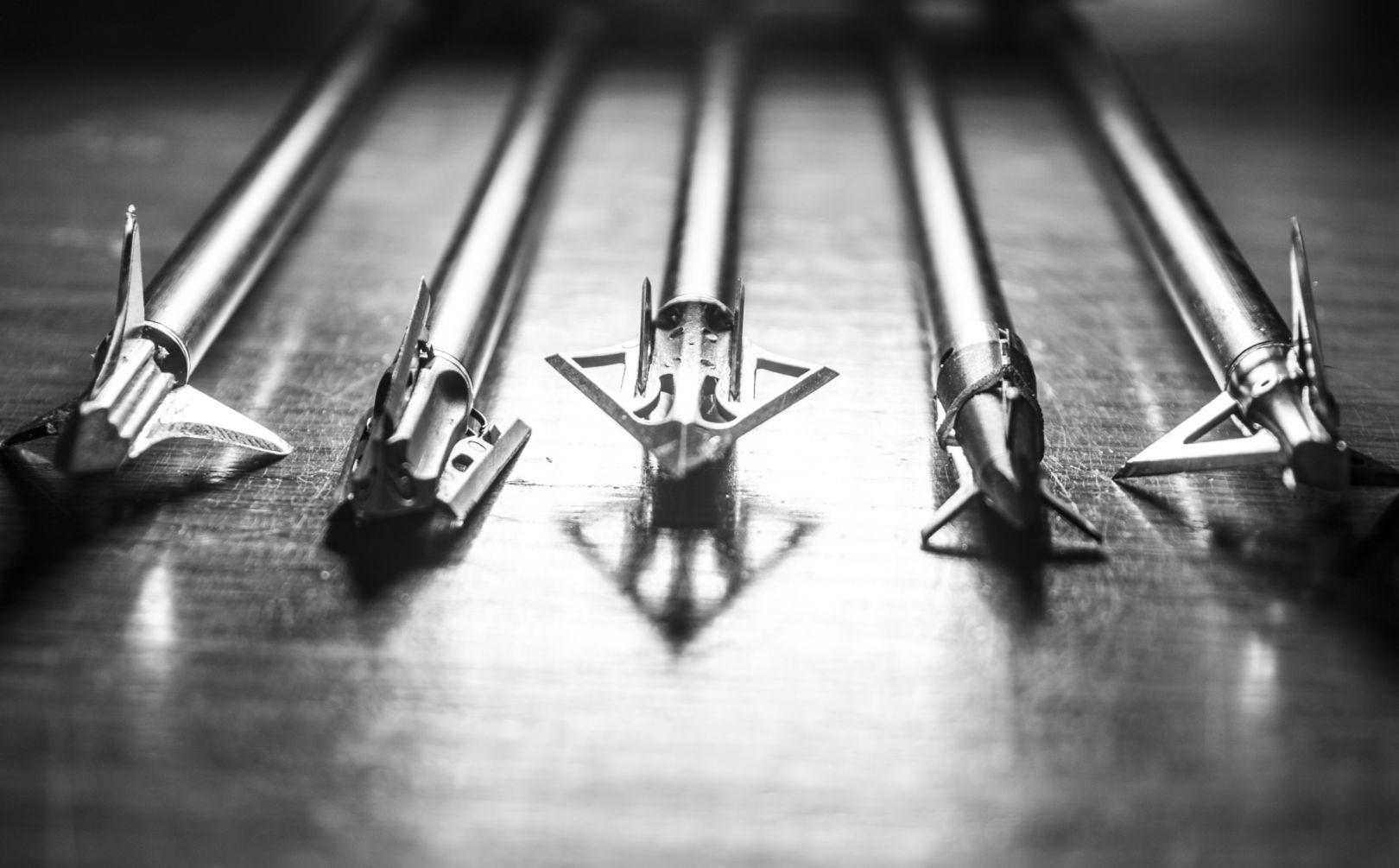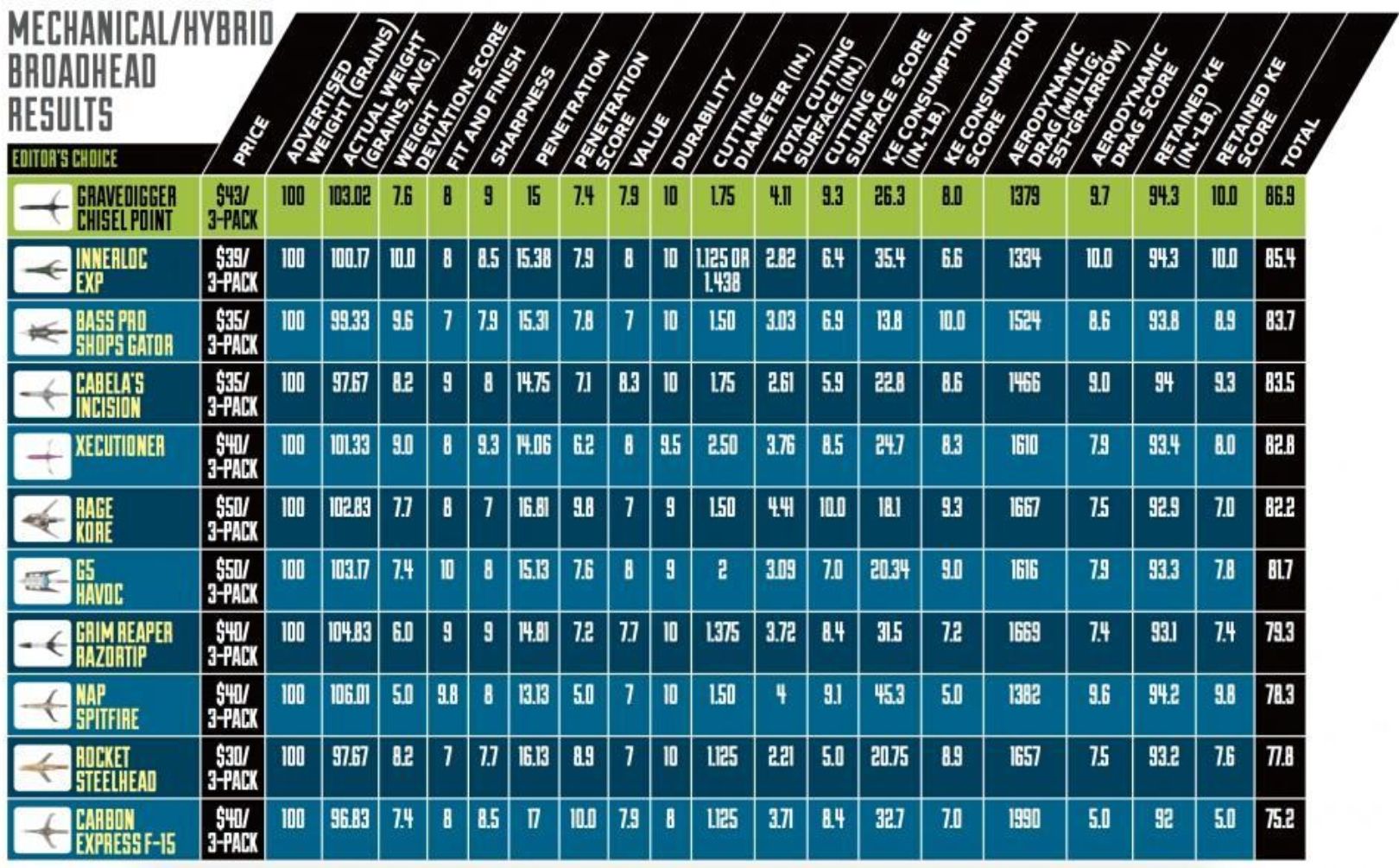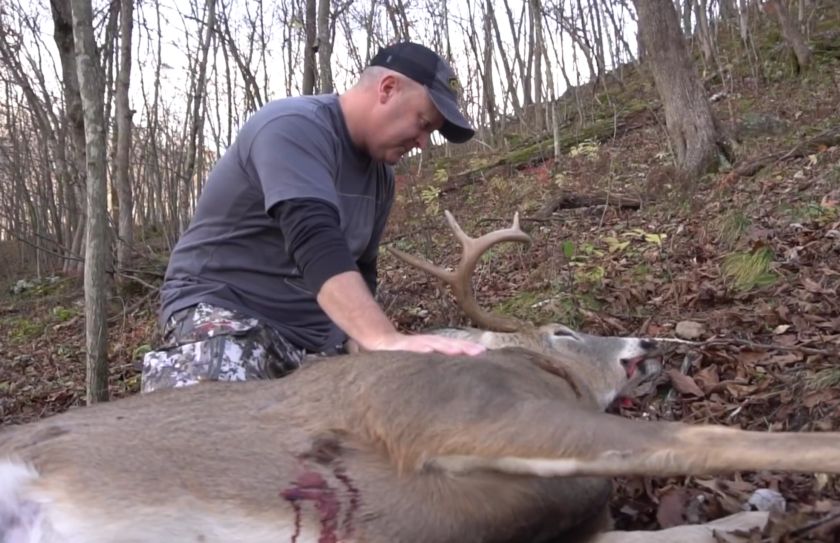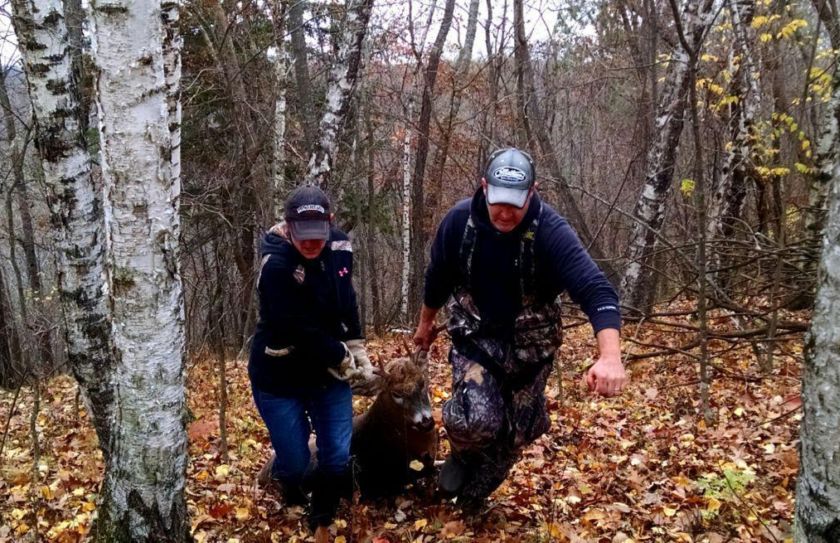
It’s an old and tired debate; mechanical vs. fixed blade broadheads. But there are many other factors to consider when choosing your broadheads. When I first began bowhunting, I wanted the biggest and baddest fix blades, but as time went on, the temptation to shoot mechanicals grew. Each season, mechanicals became simpler, and seemingly more fool proof, but there is still undoubtedly a risk with using a broadhead that has to open, penetrate, and cut on any surface at any angle at the moment of truth. As archery equipment surpasses itself year after year, it seems that the gap between mechanical and fixed blade broadheads has widened. Its important to consider which factors matter most to you the hunter when standing in the broadhead section, reading the packaging at your local sporting goods store.
Accuracy
Bows boasting speeds over 350 fps and beyond have driven the development of smaller in flight braodheads on both sides of the isle to cope with the risk of arrows veering due do large blades. Fixed blade broadheads and mechanicals alike strive to produce field point like groups, but I have yet to shoot a broadhead that walks the walk at 40+ yards. That’s not a jab at broadhead companies, its simply an inconvenient truth, and so I prefer to site my bow using broadheads, rather than whine about how they don’t shoot exactly like my field points at extended distances. What I have found, is that the smaller, and simpler the broadhead is, the better it flies, period. There’s a much smaller likelihood for error with a slim, aerodynamic mechanical broadhead. That being said, at ethical distances I have not noticed a significant lack of accuracy when shooting fixed blades in reasonable conditions. In my opinion, accuracy is the lesser of all evils in the argument of choosing mechanical or fixed blade broadheads. Arguably, the most important factor in the accuracy debate, is whether your bow is precisely tuned. If you and your bow shoot consistently, it can be expected that your arrow and broadhead will fly consistently.
Penetration
Now we’re getting somewhere. Finally, that physics class I struggled through in high school can provide some useful insight, or at least some fancy words to help describe the issue at hand. It all comes down to kinetic energy – energy that a body posseses by being in motion, and the fact that energy cannot be created or destroyed. When it comes down to the moment of impact, I don’t want my arrow and broadhead to use any of its kinetic energy opening its blades, when it could be used to further pound through bone and flesh. Cutting diameter aside, the surface area and friction are greater with bigger blades, this goes for mechanicals and fixed blades alike. However, as mechanicals boasting 2+ inch wound channels try to pierce a whitetails chest cavity, they often times expend all of their kinetic energy before even creating an exit wound. When the mechanical vs fixed blade debate gets heated, this is the topic that peaks my interest. I have heard countless stories of mechanical heads falling short in this category. In my experience, I can honestly say that I have never gotten the coveted pass through shot when using a mechanical broadhead. On the other hand, I have stuck serveral fixed blades into the mud after passing through a whitetail. A blade that has no work to do other than cut and penetrate saves its energy, and uses it wisely. Kinetic energy is a big deal, and I urge you to consider how your broadhead will spend it when choosing whether a mechanical or fixed broadhead is best.

Image courtesy of Outdoor Life's test of 29 Fixed-Blade and Mechanical Broadheads by Todd Kuhn in September of 2015. The full article can be found here.
Cutting Diameter
Bigger blades, bigger wounds, bigger blood trails right? That seems logical, but does it always shake out that way? In the best circumstances, yes. The red carpet as its often referred to does exist, I have seen it first hand, but how often is it achieved? I shot 2 blade 2+ inch cutting diameter mechanicals for several years, and while I harvested a handful of deer using them, not once was I blown away by the severity of a blood trail. In fact, they seemed to leave me expecting more each time I got out the headlight. On 2 specific occasions, I even had a hard time tracking deer on spotty bloodtrails that didn’t even span 70 yards. The best explanation I could offer, was that since my arrow did not pass through, the wound, though wide, was not open, because the arrow was still in it. On the other hand, I have helped drag out bucks taken with mechanicals that literally sprayed blood like a cheesy horror film. I often hear hunters say that a deer hit with a field point in the right spot will die, and I agree wholeheartedly. So cutting diameter, in my opinion, will never trump shot placement or penetration. Devastating cutting diameters should certainly play a role in your choice of broadhead, but in the grand scheme of things, does an extra ¼ inch on a well placed shot make up for lack of penetration? That is for you to decide!
Dependability
This is arguably a combination of factors, but you should choose a broadhead you can count on. If a broadhead has to do work to deploy when it hits the target, there’s a chance it wont deploy correctly or that it wont deploy at all. We have all heard the horror stories of an expandable that veered when it hit its mark. Shooting from an angle can amplify this risk, and it happened to Jeff first hand! He has chosen fixed blades ever since. Now factor in accuracy, penetration and cutting diameter. Which factors are the most important for choosing a dependable broadhead? For many of us, the opportunity to shoot deer in the fall is what keeps us sane the rest of the year. So choose a broadhead that blends the factors to create a lethal combination that leads to stories of success and meat in the freezer. For me, dependability relies on consistency in performance. So broadheads that hit the target without having to open, hit the target accurately, and penetrate through and through are ones that I choose.

Conclusion
Plain and simple, a broadhead you can trust is the broadhead you should choose. If you have had great experience using a fixed or mechanical in the past, why change a thing? In fact, if you have had continued success using a specific brand or type of broadhead, I’d like to hear about it. As for myself, its fixed blades from here on out. I know they fly well out of a bow that is tuned correctly and they penetrate without losing Kinetic Energy trying to open their blades. Those are the factors that influence my decision.
The experience I have had with mechanicals is not as bleak as I make it out to be, I’ve never lost a deer because of one, but I have had a tougher time tracking them. I’m a meat and potatoes kind of person, the simpler the better, and the broadhead that puts more meat next to my potatoes is a fixed 3 blade 100 grain broadhead. For Jeff Sturgis, it’s a Carbon Express F-15 100 grain broadhead, which is rated the #1 broadhead for penetration per Outdoor Life's testing. He has killed several deer, created great blood trails and has enjoyed 100% pass throughs with the 6 cutting surfaces. After exclusively shooting mechanicals of various designs from 1995 through 2010, Jeff made the switch for the pure penetration and dependability of fixed blade heads and hasn't looked back. This certainly won’t offer any conclusion to the age old debate of mechanicals vs. fixed blade broadheads, but hopefully it will offer some insight to which factors matter, and perhaps help you decide on which broadhead to take to the stand this season.
Written By Dylan Lenz


